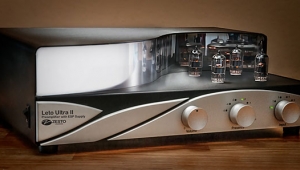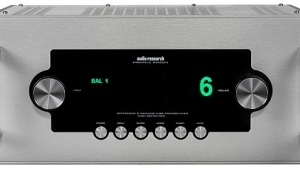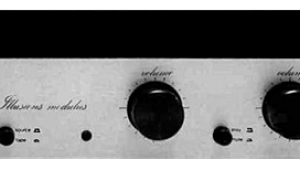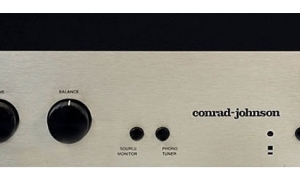| Columns Retired Columns & Blogs |
Audio Research SP-11 preamplifier
If there is indeed a renaissance of tubes in high-end audio—and it is clear there is—much of the blame lies with Audio Research Corporation.
Audio Research president William Johnson was custom-building tubed power amplifiers for the carriage trade as far back as 1951, which means he has been making tubed equipment for longer than anyone else currently in audio. In 1961, faced with more orders than he could possibly fill single-handed, he started a modest manufacturing enterprise called Electronic Industries, which was subsequently bought out (along with its proprietor and chief designer) in 1968 by Peploe, Inc., a marketing firm with an interest in "breaking into" the burgeoning audio market.
In 1970, Bill quit Peploe, bought back his patents from them, and restarted his own manufacturing facility under the name of Audio Research Corp. That was five years after the first solid-state audio electronics had started to appear; by 1970 there was hardly a single tubed component to be found in Stereo Review's annual Equipment Directory. (Actually, Audio Research wasn't even to be found in that Directory until the 1983 edition.)
ARC has always been unduly reticent about tooting its own horn. With relatively few dealers nationwide, a modest, understated advertising campaign, and a commitment to an "obsolete" technology that everyone "knew" was dead (the old, overheating, mortal vacuum tube), Bill's products did not really begin to attract audiophile interest until The Absolute Sound "discovered" them in the mid 1970s. (It was TAS.)
At that time, when even the best solid-state equipment was still doing narsty things at the high end, Bill's no-holds-barred tubed gear was a revelation! The embodiment of what we now think of as "the tube sound," they were rich, warm, liquid, and silky-smooth where the solid-state competition was stark, steely, wiry, taut, and lean, with an overlay of fuzzy grundge at the top. TAS's enthusiasm for this kind of sound was soon echoed by Stereophile, and suddenly ARC started getting the recognition it should have had all along.
The honeymoon lasted about two years. Presumably under pressure from his dealers to "come into the 20th century," Bill introduced two solid-state products: the SP-4 preamp and D-100 power amplifier. The dealers probably loved them, but TAS and Stereophile did not. I've related what happened elsewhere in this issue, so I won't reiterate. Suffice it to say it was not easy borrowing an SP-11 and two D-250s for my own tests, but it finally happened. The D-250 power amp will be reviewed in the next issue.
The SP-11 is a design departure for Audio Research. Like the Berning TF-10, it is neither a tube nor a solid-state preamp; rather, it is both at once. Each active stage is a combination of a triode tube and a FET—devices whose dynamic transfer (input/output) characteristics just happen to be very close to complementary. The result is an amplifying "stage" whose distortion is inherently lower than that of either a single tube or a single FET. (The distortion figures for the SP-11 are dramatically lower than for any other available tubed preamp.)
The control lineup on the SP-11 is awesome. The listing at the head of this report is pretty much self-explanatory, but some control functions need explaining. First, note that there are two "volume" controls—neither of them called that. One of these is ahead of all high-level amplifying circuitry, at which point its judicious use prevents input overload no matter how strong the signal. The second, just ahead of the output buffer, can prevent any background noise originating in the high level stages from being audible through very efficient loudspeakers or in extremely quiet rooms.
No instructions were provided with our sample SP-11, but I would assume one initially adjusts the second control (called "Level") as high as one can without incurring any audible hiss, or, if noise is no problem, all the way up. The other control (called "Gain") should then be set so the listening volume is a few dB higher than it will be for most listening. The Level control is then used for subsequent volume adjustments.
Both volume controls are actually 32-position detented potentiometers, with the smooth, silky action I generally associate with Japanese products. (The Japanese are noted for their attention to ergonomics: designing things to interface well with people.) Oddly, however, the farther to the right across the SP-11's front panel you go, the worse the switch action. The "Impedance" switch has a truly abominable action. It's hard to turn, and the detents are so abrupt you have the feeling you're going to break something every time you operate it. (Which, thankfully, you won't have to very often.) This seems somehow out of character, from both the preamp's gorgeous appearance and Audio Research's reputation for luxurious quality.
- Log in or register to post comments




































